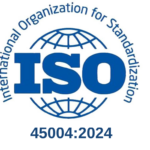It is sometimes very straightforward to identify and understand the cause of a workplace incident. If a power cable has been strung across a workplace, and a worker trips over it and is injured, there is little scope for confusion as to the reasons for the incident. In these simple circumstances, making changes to the workplace to prevent a recurrence is also relatively straightforward.
However, it is not uncommon for workplace incidents to result from a range of complex and potentially interconnected causal factors. In these cases, the accurate identification of causes, and the management of the workplace to prevent the incident from recurring in future, is much more difficult.
Well-crafted and fully implemented incident management procedures are an obvious way to manage this problem, along with developing a trained and experienced workforce. (Refer to related articles in Insight issues 43, 26, 25 and 24.)
Another, sometimes neglected, strategy to mitigate this problem is to observe the incident history and responses of other organisations across your industry and even in other industries which may not seem to be related but which may have some of the same workplace risks.
Monitoring incidents in other workplaces is an opportunity to learn from the mistakes of others without experiencing the negative impacts directly. Comparing the experiences of other workplaces to your own can help identify a problem you may not realise existed in your workplace, or to realise that complacency has crept in allowing a previously well-managed risk to become dangerous. You may find that one or several causal factors in a documented incident exist at your workplace, which provides the opportunity to address those weaknesses before they result in an incident. The observation of others can also call your attention to areas of regulatory non-compliance or WHS best practice that you may not have been aware your organisation was not complying with.
Incident information is available from:
- subscription to newsletters from safety regulators, industry and suppliers
- use of websites from safety regulators, professional bodies and industry
- participation in networking groups, seminars and industry conferences
- subscription to incident notification services offered by many safety regulators.
Please contact QRMC for more information.











